FOREVER MILKING BOB, CONTINUED
A review essay by Gregory Stephens
Rita
Marley with Hettie Jones, No Woman No Cry: My Life With Bob Marley
(Hyperion, May 2004)
Hank
Bordowitz, ed., Every Little Thing Gonna Be Alright: The Bob Marley
Reader (Da Capo Press/ Perseus, July 2004)
Reading these latest additions
to the burgeoning library about Bob Marley, a line from Bobs song Crisis
kept running through my head:
So much has been said,
so little been done
They still killing the people,
and they having lots of fun
So whats the market for more words
about Bob Marley? With all the killing going on in the world today, words
are cheap. Sometimes I wonder about Bobs skeptical assessment from the
late song Real Situation:
Nation war against nation.
Where did it all begin? Where
will it end?
Sometimes it seems like total
destructions the only solution.
But people need hope. A lot of
us still find hope in Marleys
s songs of freedom. But then words can get in the way of the myth
that animates those songs. Given my own complicity
in the rivers of words still being written about Bob, sometimes I
get the weary feeling: Well be forever
milking Bob. Ziggys dad surely would have shared his take, from
the song Works to Do, off the Life and Debt soundtrack:
How much blood have to be
shed before we rebel?
Looking for words to say
Bob Marley done said them already
Now I just works to do
Words vs. works: listen to Bob
Marleys anthemic new psalms long enough, and eventually you want something
more. Maybe you just want to give it a rest, or hear someone else carry
the torch for awhile. Maybe youd like to see those words put into practice
for a change. Or perhaps youd like to know more about the man who sang
them.
This business of milking myths,
or separating man from myth, is a tricky one. But its a business, nevertheless,
that is aimed at a market. I imagine that the market for Rita Marleys
No Woman No Cry, and a Bob Marley Reader published
by Da Capo press– is divided between those fans whose thirst for new
product by or about their hero can never be quenched, and a more skeptical
group who wonder if anything new can really be said, at this point, about
the Marley clan.
The answer to that question, in
the case of Rita Marleys book, is quite a bit.
Contemporary Jamaica is awash in
rhetorical gender wars. Calls for the assassination
of homosexuals. Or the latest craze, condemning men who engage in
oral sex with women. Given this culture
of intolerance, it should be no surprise that Rita Marleys book
burst into public awareness via some controversial statements she made
about her late husbands notorious womanizing.
More specifically, there was an
interview with Rita in the Mirror, right on the eve of the books
UK publication, that screamed: Bob
After one of Bobs many extended
absences, when he returned to Jamaica around 1974, Rita refused to have
sex with him. Bob forced himself on her, Rita says. Now this claim shouldnt
surprise anyone who knows much about Jamaican men in general, or Bob Marleys
private life in particular. But it set off a firestorm in Jamaica that
soon had Rita backtracking. Indeed, this is a muted, very brief incident
in the book, in which Rita merely says that I was almost raped. And
in her public interviews, as well as in the book, Rita has gone out of
her way to testify as to what a great provider Marley was, in a material
sense, no matter how absent or unfaithful he was, in a physical sense.
There were some voices of support,
such as Jamaica Observer columnist Mark
Wignall, who had talked to enough Jamaican women who had been raped
by men they know to take Ritas claim seriously.
But the outrage was acute among
many whose livelihood in one way or another depends on them being custodians
of a rather messianic variant of the Bob Marley culture hero myth. Ritas
accusations were below
the belt, said Bunny Wailer, the last surviving member of Bobs original
group, the Wailers. Why would she want (to taint) him at a time when
he is being treated as a saint – this individual who the world is now
seeing as an icon, a prophet and a spiritual leader, said Bobs boyhood
friend.
Bunnys reaction dramatizes why
discussion of these issues is long overdue: precisely because Marley is
being treated as a saint, while new generations imitate his promiscuity.
This tempest will remind some of the uproar after revelations about Martin
Luther King Jr.s womanizing. In both cases, custodians of the legacies
of these freedom fighters fear that awareness of their humanity, and indeed
their vices, will prevent people from continuing to honor them, or putting
their words into practice.
But once we confine our heroes
to statues, and ignore their clay feet, then we cannot forward in this
generation, as Marley sang. Or learn from their mistakes.
Marleys last years were a tragedy,
a largely unlearned lesson about the extremes of co-dependency. Rita sees
much of this clearly in retrospect: Bob was living completely for other
people. He was surrounded by ’yes people. His admirable ethic of self-sacrifice
was corrupted, until other people had taken over his life completely.
Things only got uglier after he
died. Peter Tosh and Bunny came to a meeting with Rita at 56 Hope Road,
and Peter began ripping Bobs photos off the wall. Bunny told Rita that
Bobs death had been the wages of his sin and corruption. Rita admits
candidly that she has been waiting twenty years for these words to be
in printthat after insulting her and Bob, Bunny told her that she should
shut down Bobs headquarters and come and work for them.
Better to pass over most these
later years discreetly, and focus on what is clearly the strength of Ritas
book, the years before Bob became an international superstar. Ms. Marley
begins with a scene at Bobs deathbed which both prefigures what would
come after, and points back towards what had led her to that fateful day.
In a Miami hospital, Rita began crying and said Bob, please, dont leave
me.
Forget crying, Rita! Just keep
singing. Sing! Sing! Bob said. And so she didshe kept singing, and she
learned to understand the part her voice played in this story. So that
now, when like many of us, she hears Bob everywhere, she also hears
her story. Because Im on almost all of the songs. So I also hear my
voice.
The future Rita Marley was born
in Cuba as Alfarita Constantia Anderson. She grew up, like Bob, essentially
without her parents. Bob had his mother for a few years, and Rita had
her father for a few years, but they were both the product of broken homes.
Ritas father Leroy Anderson was
a musician and a carpenter. When Rita was five, her mother Cynthia Jarrett
left Rita and her brother Wesley to start a new family. Her father took
the children to live with his sister Vida, known as Aunty to Rita.
Aunty is an unsung hero of this
story. She eventually divorced from a Mr. Britton, who had two sons outside
the marriage, and dedicated most of the rest of her life to raising Rita,
and later taking care of the children of Rita and Bob while they went
through the long, seemingly endless struggle to make a career in music.
For both Rita and Bob, their parents
were a present absence in formative ways. When Rita was nine, her mother
remarried and didnt invite her daughter to the wedding. A couple of years
later, her Aunty bought her father Leroy tickets to England and told him:
go find a life. Rita did not see him for another 10 years.
Rita trained to become a nurse.
But like many teens in similar circumstances, she became pregnant at age
17. It was really through her daughter Sharon that Rita began to see Bob,
then known as Robbie, as a partner.
The young Marley was serious and
stand-offish. But he had a very generous side. When he found out that
Rita had a baby, he began taking on a parental role. When he had spare
change, he would bring the baby food. The ultra-suspicious Aunty began
to give in to his nice ways and manners. And this is where my love came
in, Rita remembers. She looked at him and thought, oh, such a nice
guy.
This is the impression many people
had of Bob Marley in those years. Serious, self-disciplined, well-mannered,
good with children. We both became parents for Sharon, Rita notes. Yet
even as romance blossomed, at first, and maybe always, I cared for Robbie
Marley from a sisterly point of view.
The young couples conflicts were
exacerbated by a lack of money that kept them under Auntys roof for a
decade, and later by Bobs immersion in his musical ambition and the extracurricular
activities it entailed. The young couple had physical fights. Bob went
off to live in Delaware with his mother a day after they got married.
Later Rita went to live in Delaware with young Ziggy, while Bob tried
to make it as a songwriter for Johnny Nash. When Rita voiced her desire
to come home, just before Stephen was born, Bob discouraged her. I realized
were separating, were growing apart, Rita recalls. When she did return
to Jamaica, still under Auntys roof, now with four children, some nights
Bob didnt come home. Divorce crossed her mind. But she decided that even
if Im angry as hell at Bob, I have to be strong for him.
The pattern was set. Bob and Rita
had a relationship that was often more like brother and sister than lovers.
And Rita was increasingly left alone, often angry at her husband, but
determined to be the pillar in their unstable lives.
As soon as Marley signed a deal
with Island Records and gained access to the uptown property at 56 Hope
Road, the philandering began in earnest. I tried to train myself to think
of Bob as a good loving brother more so than a real husband, Rita observed.
But Marleys sense of entitlement to have many queens became ever more
brazen. A breaking point for Rita was when the film star Esther Anderson,
on loan from Island Records head Chris Blackwell, publicly scolded Rita,
telling her to stop breeding and let [Bob] find a life.
Finding a life is the theme of
the second half of Ritas memoir. While Bob found fame, Rita established
a semblance of stability for their children. With the help of a Rasta
elder named Gabby, and with Bobs money, Rita bought a government block
house at Bull Bay, 12 miles outside of Kingston. It had no water or electricity,
but it was a grand adventure for Rita and her children. Friends trucked
in water; the children enrolled in local schools. Rita planted a garden,
and later, moved into farming. Whatever I plant grows, she says proudly.
Eventually she got water and electricity.
Not long after moving to Bull Bay,
Bob disappeared for two months. No one knew for sure where he was. One
day he drove up in his Jeep, unannounced.
Where have you been? Rita asked.
I dont know, responded Bob.
Despite his I dont know program,
Bob thought of this as the family house. Coming by after a tour was
coming home for him. It was only through the private life Rita established
that Bob ever experienced any sense of normality.
Rita had a basement room dug for
Bob, a private getaway, and a little studio. At night, after putting the
kids to bed, theyd go down to this basement, sometimes to make out
but more often just to rehearse and compose.
Her descriptions of life at Bull
Bay are, for me, the most endearing part of the book. There were talent
shows with the kids–dress rehearsals for the Melody Makers, sometimes
with Bob in attendance. But he was still essentially a visitor. Sometimes
he brought a girl in his car. More than once he flew into jealous rages
over Ritas imagined infidelities with a male friend named Tacky. Once
Bobs lover Cindy Breakspeare came in the room and called him darling
while Bob was discussing his suspicions with Tacky, who then called him
on his hypocrisy.
Rita was still financially dependent,
but charting her own path. She opened the Queen of Sheba restaurant, with
Bobs blessing and support, and supplied this from her own farm. But Bobs
career had proceeded without her contribution, except as mother. So it
was after years of de facto professional separation that Bob asked her
to record and then tour with him as part of the I-Threes.
One thing about working for Mr.
Marleyhe pays you, Rita says emphatically. It was a professional relationship,
primarily, that brought Rita back into Bobs career. The more that Bob
became corrupted by show business, the more that Ritas relative immunity
to his glamorous fantasy life seemed to bother him. She could always bring
him up to reality, because Rita was there from the beginning, from one
[pair of] underpants, and those were my hands, every night, washing them
out.
Reading Ritas story, especially
her unwanted burden of the legal battles over Bobs estate, one senses
that the whole of her relationship with Bob after around 1971 was a long
detour. This detour chewed up a couple more decades, as she fended off
the sharks that swarmed over his iconic remains, and struggled with the
long shadow Bob cast over her life. One could understand if Rita came
away from this experience embittered, or mercenary. And on the latter
count, Ive heard my share of horror stories. But Rita Marley comes across
as a very sympathetic personality in this book. One cannot but respect
her for being strong for her children during so much upheaval.
Now that her children are self-sufficient,
Rita has relocated to Ghana. Her work in a mountain village there appears
to combine roles as social worker and entrepreneur. And in some ways,
she had learned from Bobs mistakes. While Bob handed out money freely
to thousands, a horde that arguably ate him alive, Rita has taken a different
approach. Rather than just passing out money to people who become accustomed
to handouts, Ritas stance has been more like that old saying: Give a
man a fish and hell eat for a day; teach him how to fish and hell eat
forever.
* * *
Rita Marleys No Woman No Cry
is on the inside looking out. There is little about Marley the
myth, and maybe more than we want to know about Bobs all-too-human
limitations. By contrast, Every Little Thing Gonna Be Alright: The
Bob Marley Reader is on the outside looking in. It tells much more
about Bobs mythic or iconic dimensions.
The tone is set by the editor,
Hank Bordowitz, author of the bio Bad Moon Rising. On the very
first page of text, a mini-intro titled Marley: Cultural Icon, Bordowitz
informs us that Marley is a cultural martyr who suffered for the sins
of his audience.
Ouch. That reminds me of a red-headed
singer at a Ft. Worth Bob Marley Festival in 2002 who shrilly declared:
“Bob Marley died for your sins!”
One could grin and bear such lunacies from enthusiastic fans, but in a
book whose editor and writers surely want to be taken seriously, it does
more than set ones teeth on edge. Its enough to make me want to point
out the element of truth in assertions made by Bunny Wailer or Peter Tosh
that Bob Marley may have died early because of his own sins.
About the foreword by Roger Steffens.
I know Roger personally and admire his long decades of work promoting
reggae in Los Angeles, and spreading the gospel of Bob Marley internationally.
But Steffens too has a tendency to wander into hyperbole and even hagiography.
What does it mean to claim that Marley is without question one of the
most transcendent figures of the past hundred years? Transcendent in
what sense? How do we square Bobs outsized appetite for women and herb
with the assertion that he cared nothing for earthly trappings. Arent
addiction to sex, to ganja, and the quest for fame all earthly trappings
that entrapped Marley in different ways?
This Reader is divided
into two main sections. The first is titled Wake Up and Live: The Life
and Times of Robert Nesta Marley. Each chapter takes a Marley song to
indicate its focus. Waiting in Vain is an oral history of the 1962-1972
period. This includes a reflection by Rita Marley published in Essence
in February 1995 that is clearly a first draft for part of her book.
Chapter Two, Stir it Up, covers
the rise to international acclaim by Marley and the Wailers from 1972-1976.
This includes a lengthy excerpt from Lee Jaffes book One Love,
which I have reviewed previously. Most
of the writing dates from the 1970. We listen in on jaded New Yorkers
who know how obvious some of Marleys stage mannerisms were, and yet acknowledge
that they found his charisma irresistible.
The best piece in this chapter,
and maybe in the book, is Lester Bangs Innocents in Babylon. Bangs,
writing for his Creem Magazine (immortalized in Almost Famous),
freely confesses that Marley is his least favorite Jamaica artists.
That critical distance, and the fact that he has no editorial restraints
(this piece runs over 40 pages), leads to some typically Bangsian gems
(as well as superfluous motion). It should be no surprise that Bangs felt
most at home in Jamaican record shops, rather than waiting around on stars.
His time in one deafening store produces this memorable line: the guitars
chop to kill. Bangs was also present at a well-known twilight interview
that Stephen Davis conducted with Marley, and at a rather bizarre quasi-groundation
conducted by Ras Michael, Chinna Smith, and others.
Chapter Three is Top Rankin:
The First Great Third World Star, 1976-1981. This includes Vivien Goldmans
portrait of the Wailers in Europe. Goldmans feature is memorable for
human dimensions of the Tuff Gong it reveals. Bob justified Kayas
love songs and muses: How long must I sing the same song? When Vivien
drinks Irish Moss for the first time, Bob tells her that this is good
for her: it make your pom-pom wet. In a different register, Carol Coopers
Afrocentric feature in the Village Voice describes Marleys
ambition as to resurrect the political ethic of Garveyism.
Chapter Four, Blackman Redemption,
is about the Second Coming of Marley 1981-2002. One can see how quickly
reportage turned to hagiography in those years. (It means the biography
of saints, or an idolizing biography). Writing for the Village Voice
in 1982, Isaac Fergusson describes Marleys 1967 semi-retirement
from the music biz, when he farmed at St. Anns, as a time in which he
made a covenant with a new God. Ah, check with Rita for her memory of
that hard-scrabble period!
The much shorter second section
of The Bob Marley Reader is titled Music Gonna Teach Them a
Lesson: The Meaning of Bob Marley. An essay by the late Jamaican Prime
Minister, Michael Manley, on Reggae and the Revolutionary Faith, is
worth a read. I dont think the Honorable Manley needed to put it in all-caps,
but its worth repeating: in contrast to, say, soca (or R&B, etc.)
THE GREATER PART OF BOB MARLEY IS THE LANGUAGE OF REVOLUTION. It is
this assertion of revolutionary possibility that sets reggae apart, he
adds.
Does Bobs visionary work, what
Steffens rightly calls an embarrassment of riches, lose any of its revolutionary
possibility, now that it has been so relentlessly commercialized, or
now that we know more clearly just how flawed Marley was as a human being?
I dont think so.
Theres a famous anecdote, which
Ree Negwenya relates in her account of Marleys visit to Zimbabwe, of
the I-Threes fleeing to their hotel after getting hit by tear gas. Bob
was coming off stage when Rita, Judy Mowatt, and Marcia Griffiths returned.
Half-smiling, he said: Hah! Now I know who the real revolutionaries
are.
We ought to know by now how many
meanings that line can have. Rita Marleys book is important because it
shows who stayed at home while the freedom fighters were fighting. I hope
the next Marley Reader grapples with some troubling questions
Marleys life raises, such as: is the revolutionary impulse best enacted
abroad, or at home, and what is the womans place in such movements?
And, can we or should we aspire to outgrow the messianic mindset? Idolatry
was both Bob Marleys strength (his faith in his perfect father), but
also a form of mental slavery in both the man and his admirers.
———————————–
Stephens is the author of On Racial Frontiers: The New Culture
of Frederick Douglass, Ralph Ellison, and Bob Marley. His current
book project is Real Revolutionaries, including a chapter about
Marleys use of Marcus Garveys concept of a second emancipation. Contact:
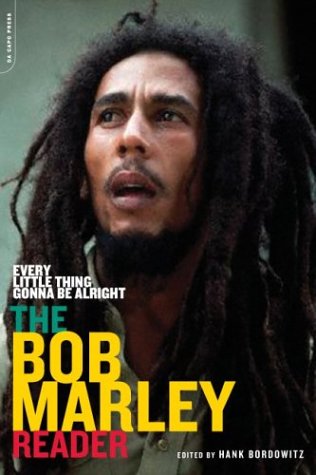
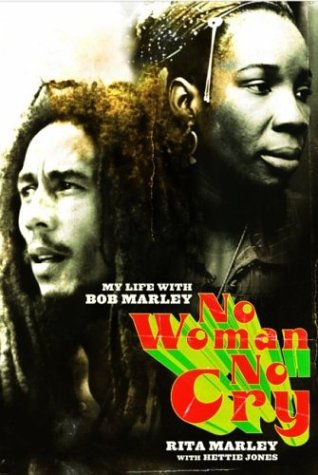
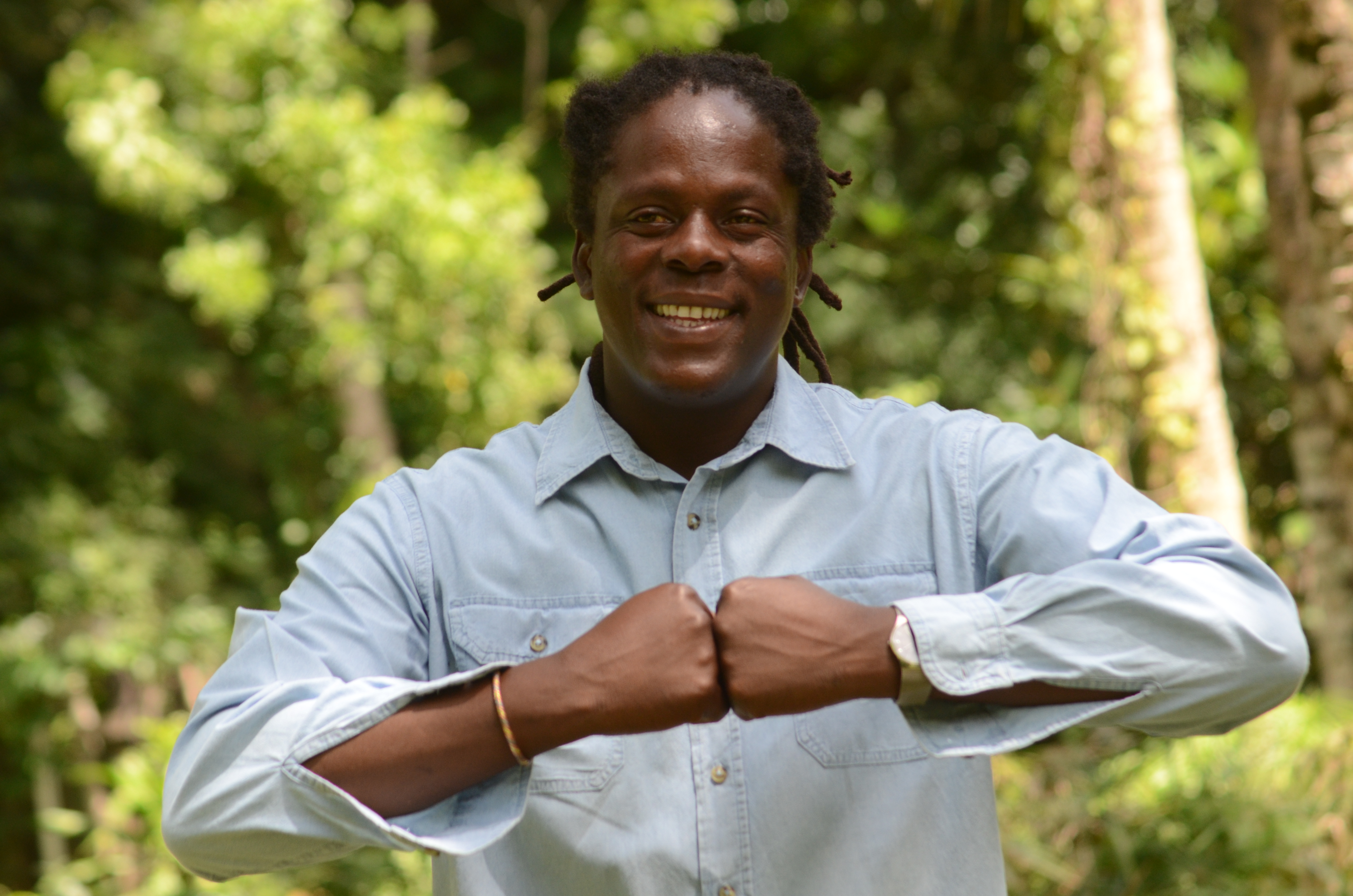


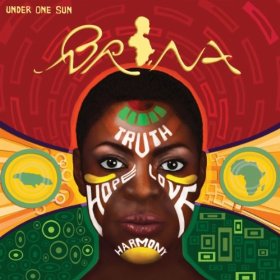
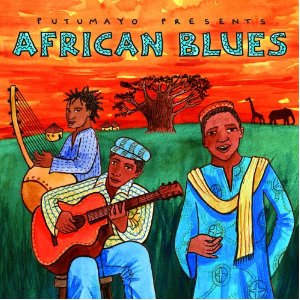

1 comment
Queen Frostine says:
Aug 11, 2017
I don’t see this as “milking Bob” at all. This is Rita’s story–one she has every right to tell. Unlike all the glorified, whitewashed 3rd-hand books where Marley is practically deified, this one actually shows a different side to the man (as well as informing us about Rita’s individual trials & triumphs in her own life).
As outrageous as Bob’s infidelities seem, his behavior is par for the course for many Jamaican/Rasta men. They make tons of babies with different women, never staying in the child’s life. (Watch the documentary “Tell The Children The Truth” on Youtube for more on this “cultural practice”). The section about Bob raping Rita really was hard to stomach. How can you preach love & equality while treating women like nothing more than a series of holes that exist for your pleasure? We are half the human population, so it’s hypocrisy to say we should be conservative & faithful while men sow their seed all over the 7 continents, rape us & toss us aside when they’re done.
This book doesn’t strike me as a cheap ploy for money or fame. It had to be painful to relive and write about some of these things. It takes a courageous woman to share the indignities Bob put her through with the entire world, knowing people will be asking “Well why did she stay & put up with it?” Not this reader. I put the blame squarely where it belongs: on the abuser, not the victim.